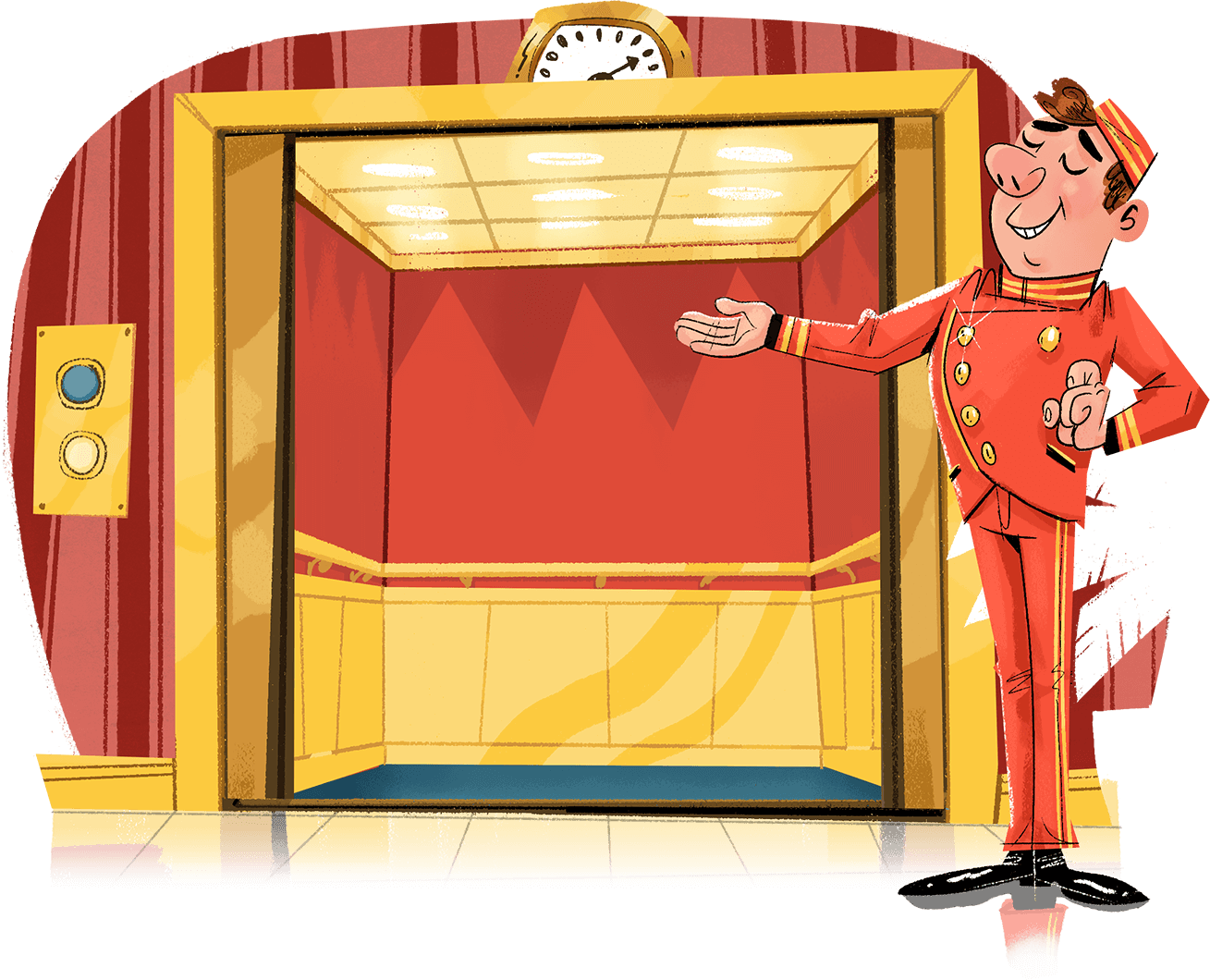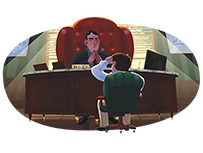 Illustration by Bart Browne
Illustration by Bart BrowneEmbarrassing to admit, but the first time I heard the term “elevator speech” I thought you had to be in a real elevator and give a real speech. All sorts of questions ran through my mind. Who would want to give a speech in an elevator? The only type of person I could think of was one with whom I would never want to be in an elevator, or any other enclosed space, for that matter. (Hey there! My name is Ray Whitherspoon and I sell burial plots for house pets!)
Furthermore, who would want to listen to a speech in an elevator? Most people who get into an elevator just want to get out of the elevator. The rest are 5-year-olds who like pushing the buttons. The only people who talk in an elevator are the ones who are terrified of being in an elevator, like the person who sits next to you on an airplane and blabbers incessantly from Seattle to Boston. You listen politely because you know that the poor soul’s logorrhea is a defense mechanism against a near-paralyzing fear of flying that would otherwise have him or her screaming WE’RE ALL GOING TO DIE! And then there is the most obvious question: What if there’s no elevator? Would there be some kind of taking-the-stairs-speech alternative?
Of course, I soon learned that “elevator speech” is meant figuratively since it requires neither an elevator nor, considering its recommended maximum length of 30 seconds, a speech. Speeches take at least a few minutes, often longer. Or they take a few minutes that just seem longer. The term came about as a way to describe a form of self-promotion by which you are able to say who you are, what you do and why your listener should care, all in the time it takes for a short elevator ride—i.e., the aforesaid 30 seconds. (Question: Is “short elevator ride” redundant? Even a ride to the 86th-floor viewing platform of the Empire State Building takes a mere 60 seconds. The only “long elevator ride” I can imagine is when you’re stuck in one, and then it can be very long indeed.)
“Most people just want to get out of an elevator.”
Hence, you can make an “elevator speech” in a parking lot, a restaurant, a golf club pro shop, or even in a hotel lobby where your prospect is simply waiting for an elevator. Most important people are impatient, and they keep pushing the button for at least 30 seconds to make sure the elevator knows who’s waiting for it. This is your shot. Fire away.
There are, of course, rules for a good elevator speech, as many expert Toastmasters already know:
- Don’t speak in a monotone or you may be mistaken for the pre-recorded voice that announces what floor you’re on (if you happen to actually be in an elevator).
- Don’t frown. Self-promotion is not helped by a face that says you don’t really believe it yourself.
- Don’t speak too fast. Just give a leisurely review of all your most important qualifications in 30 seconds. If you have more than one, that might be a challenge.
- Don’t ramble. Well, that’s easy. Nobody can ramble in 30 seconds, not even my brother-in-law when he talks about his collection of beer mugs.
- Address your prospect’s pain points. Not knowing the person, you might first have to ask, “Where does it hurt?”
- Most importantly, identify your Unique Selling Proposition. (Hello, my name is Fred and I manufacture the only machine in the world that can shred your most incriminating documents and make them look like party favors.) Something like that.
You may resent having to cram the self you’ve worked so hard to cultivate into 30 seconds, but that’s the world we live in, folks. Earlier societies had 24 hours in a day. We have only 24 hours in a day. How do we ever manage?
I’m glad I don’t have to give an elevator speech. I wouldn’t know what to say—and I couldn’t say it if I did. I’m not good at self-promotion. I introduce myself by saying, “Hello, I’m John Cadley and I’m sorry.”
No, elevator speeches aren’t for me. If I need something from someone, I use the old-fashioned method of asking. I beg.
John Cadley is a former advertising copywriter, freelance writer, and musician living in Fayetteville, New York. Learn more at www.cadleys.com.



 Previous
Previous
 Previous Article
Previous Article

